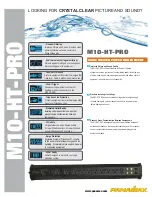
ANSI04000136-3-en.vsd
ON
OFF
BLKON
BLKOFF
INHIBIT
BLOCKED
SETON
INPROGR
ACTIVE
UNSUCCL
SUCCL
CLOSECB
PERMIT1P
3PT1
WFMASTER
RESET
1PT1
2PT1
TRSOTF
TR2P
TR3P
SYNC
INPUT
xx
xx
xx
xx
xx
xx
xx
xx
xx
xx
OR
OR
OUTPUT
xx
OR
PROTECTION
xxxx-TRIP
ZCVPSOF-TRIP
ZMQPDIS (21)-TRIP
TRIP-TR2P
TRIP-TR3P
SESRSYN (25)-AUTOOK
IOM
IOM
SMBRREC (79)
xx
xx
xx
xx
xx
xx
xx
xx
xx
SKIPHS
THOLHOLD
WAIT
RSTCOUNT
3PT2
3PT3
3PT4
3PT5
READY
PREP3P
TRIP-P3PTR
CBREADY
52a
PLCLOST
RI_HS
RI
GROUND RELAYS
BLOCK
ANSI04000136 V3 EN-US
Figure 129:
Example of I/O-signal connections for a single-phase, two-phase or
three-phase auto reclosing sequence
Setting recommendations for multi-breaker arrangements
M12399-87 v6
Sequential reclosing in multi-breaker arrangements, like breaker-and-a-half, double
breaker and ring bus, is achieved by giving the two line breakers different priorities.
Refer to figure
. In a single breaker arrangement the setting is
Priority = None
. In a
multi-breaker arrangement the setting for the first circuit breaker, the master, is
Priority
= High
and for the other circuit breaker
Priority = Low
.
While the auto reclosing of the master is in progress, it issues the
WFMASTER
output.
After an unsuccessful reclosing the
WFMASTER
output is also maintained by the
UNSUCCL
signal. When activating the
WAIT
input, in the auto recloser set as slave,
every dead timer is changed to the value of setting
tSlaveDeadTime
and holds back the
auto reclosing operation. When the
WAIT
input is reset at the time of a successful
reclosing of the first circuit breaker, the slave is released to continue the reclosing
sequence after the set
tSlaveDeadTime
. The reason for shortening the time, for the
normal dead timers with the value of
tSlaveDeadTime
, is to give the slave permission
to react almost immediately when the
WAIT
input resets. The mimimum settable time
Section 12
1MRK 505 370-UUS A
Control
334
Busbar protection REB670 2.2 ANSI
Application manual
Summary of Contents for RELION REB670
Page 1: ...RELION 670 SERIES Busbar protection REB670 Version 2 2 ANSI Application manual ...
Page 2: ......
Page 24: ...18 ...
Page 40: ...34 ...
Page 72: ...66 ...
Page 102: ...96 ...
Page 266: ...260 ...
Page 272: ...266 ...
Page 290: ...284 ...
Page 432: ...426 ...
Page 542: ...536 ...
Page 552: ...546 ...
Page 553: ...547 ...
















































